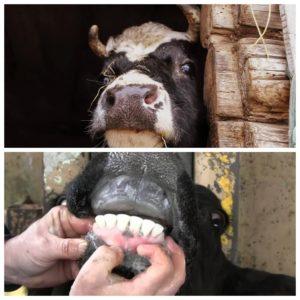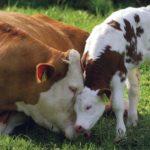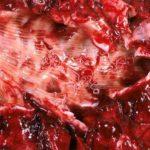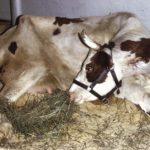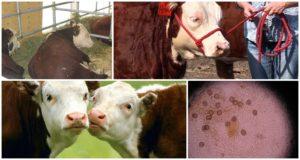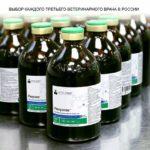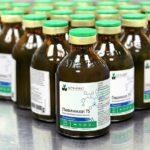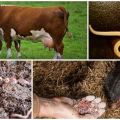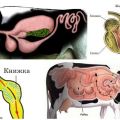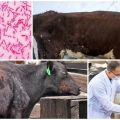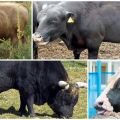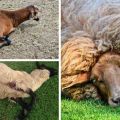Symptoms and diagnosis of dictyocaulosis in ruminants, treatment and prevention
Helminthiases are common diseases that cause significant harm to the livestock of cattle and other farm animals. Especially a lot of troubles have to be expected from ruminant dictyocaulosis - a helminthic invasion that affects the respiratory tract - the bronchi and lungs of the victim. Due to infection with worms, animals develop slowly, enter puberty late, reproduce poorly and die early.
What is this disease
Dictyocaulosis of ruminants is a type of helminthiasis, provoked by the penetration of the lungs, trachea and bronchi of animal nematodes of two varieties belonging to the same family:
- Dictyocaulus filarial, parasitizing small ruminants such as sheep and goats.
- Dictyocaulus viviparous causing cattle diseases.
With this helminthic infestation, parasites cause severe irritation of the respiratory tract, leading to a deterioration in the health of the livestock, which causes significant losses to farmers and large agricultural producers.
What is the economic damage from pathology
Ruminant dictyocaulosis is easily transmitted from sick animals by food, therefore, the larger the herd, the higher the risks of mass destruction and death of a large number of livestock. It is difficult, time-consuming and expensive to treat ruminants with dictyocaulosis, this affects productivity, the rate of weight gain, when it comes to beef cattle breeding, and a decrease in milk production in dairy industries.
In addition, livestock begins to lag behind in growth, later it reaches the breeding season, which also causes huge material damage to breeders, both small owners and farmers, and mass producers.
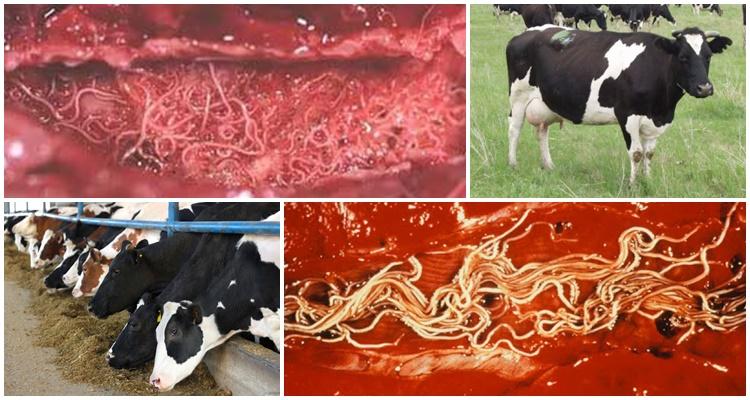
The causes of the disease
The causative agent of dictyocaulosis in ruminants is a variety of nematodes - filamentous helminths that settle in the lower respiratory tract of ruminants. They are resistant to environmental influences, so they can be on the grass, in the ground and on other objects for a long period. From here, the parasites get on food, mainly on the grass, which is eaten by ruminant cattle in pastures, so the start of the incidence occurs in spring, early summer, and the peak is in the middle of the warm season until October.
In the respiratory tract of the victim, mature individuals of the parasite lay eggs, which, with cough, saliva, sputum, are secreted out into the oral cavity. The animal swallows eggs, which turn into larvae in the intestines, which are at the first stage of development. Together with the droppings, they are removed outside. However, some of the eggs and larvae can get on the grass and surrounding objects due to sneezing or coughing.
If the ambient temperature is below 10 degrees or above 30 degrees, the helminths will remain at rest. But if the heat level rises above the lower mark and does not "exceed" the upper limit, the air will be sufficiently humid, and the oxygen level will be high, nematodes have every chance to molt twice and continue their development to the state of invasive larvae.
Swallowing them with food and / or water, animals become infected with ruminant dictyocaulosis and can carry parasites in themselves from 3 months to a year. They, as well as wet meadows and pastures, water sources become foci of infection and can lead to massive injuries of the entire livestock.
Symptoms and signs of the problem
At the first stage of ruminant dictyocaulosis, the animal shows blurred signs that resemble digestive upset. They are accompanied by lethargy, impaired appetite, frequent loose stools. Then, after 3 weeks or a month, a mild cough appears in cattle infected with dictyocaulosis, gradually becoming dry, difficult, and causing severe discomfort. Weakness gradually increases, the animal becomes depressed.
Young individuals suffer from nasal discharge, fever, exhaustion, and secondary infections. Asphyxiation may also occur, which develops due to the accumulation of parasites in the respiratory tract. Dictyocaulosis of ruminants has a multifaceted effect on cattle and small ruminants:
- The mechanical effect is associated with the accumulation of eggs and larvae in the trachea and bronchi, as well as in the lungs. This causes respiratory failure and an acute lack of oxygen, which has a depressing effect on the general well-being, appetite and development of young animals.
- The presence of helminths causes inflammation in the surrounding tissues, which leads to a rise in temperature and a deterioration in well-being.
- The vital activity of nematodes provokes intoxication, which aggravates the course of the disease.
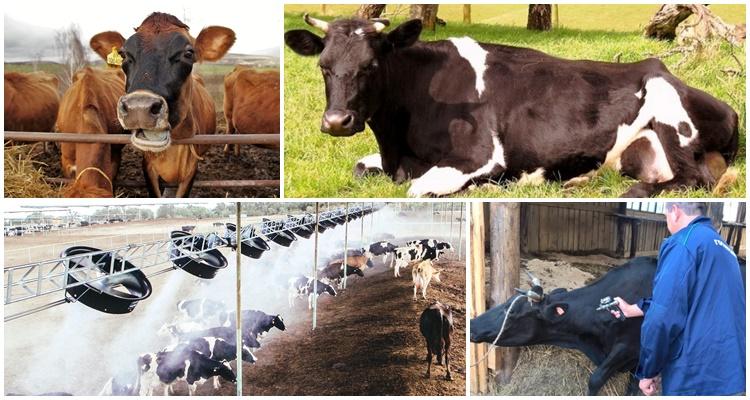
Signs of dictyocaulosis will be more pronounced and noticeable in the case of weakened, unhealthy, old or very young animals.
Diagnostic methods
In living animals, the diagnosis of dictyocaulosis can be made on the basis of obtaining results according to Weid or Berman-Orlov and comparing them with the clinical picture of the disease. Until the larvae are fixed in the secretions of ruminants with dictyocaulosis, an intradermal reaction to allergies can be performed. With it, the allergen is injected into the fold under the tail using a subcutaneous injection. The infection can be detected no earlier than 21 days after infection.
Posthumously, to identify the cause of the death of the animal, an autopsy of the ruminant internal organs affected by dictyocaulosis is performed. When analyzing animal feces, it is necessary to distinguish nematodes from other larvae with similar features and sizes.
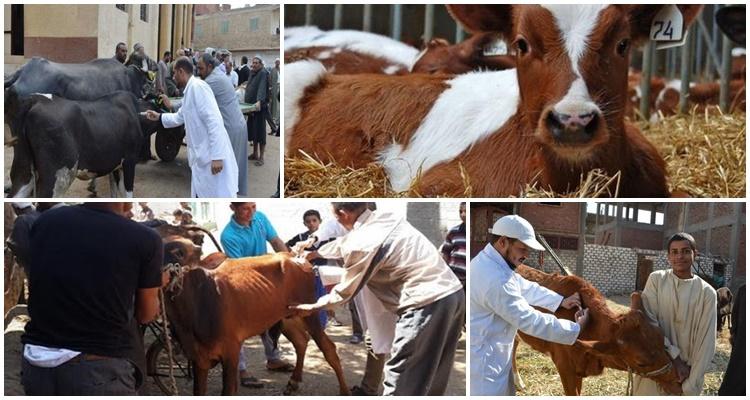
Treatment of dictyocaulosis in cattle
With the timely detection of invasion, the following drugs are used:
- "Ditrazin". This drug has an excellent effect on the causative agents of ruminant dictyocaulosis. Small ruminants are given single injections for prophylaxis, repeated for treatment. The dosage is 4 milliliters per 10 kilograms of animal weight. The injection is done in the area of the withers or elbow joint, in the form of a warm, freshly prepared solution. For cattle, the dose is 2 milliliters per 10 kilograms of body weight, injected three times, on the first, second and fourth day.
- A solution of iodine in water is prepared as follows: 1 gram of iodine in crystalline form, 1.5 grams of potassium iodide is dissolved in 1.5 liters of boiled or distilled water. In this proportion, the drug is administered to young small livestock. For calves and other cattle, a more concentrated preparation is made, diluting the same amount of iodine and potassium iodide in 1 liter of water.
- "Tsiazid" in the form of injections is used three times at intervals of 0.025 ml per day intramuscularly or subcutaneously.
Also, the following drugs are used for therapeutic and prophylactic purposes: Levamisole 75, Ivermek, Diktifug (which is a complete analogue of Tsiazid), Loksuran, Nilverm and many others. The method of fumigating the herd with aerosol of aluminum iodide has been developed and is being used in Ukraine.
It is extremely important to follow the exact dosage indicated on the specific preparation or calculated by the veterinarian for the sick animal. Medicines are toxic, and exceeding the dosage can negatively affect the health of the infected herd.
During the treatment, the cattle are not released into the pasture, and the excrement is carefully collected and destroyed. The premises must be kept perfectly clean.
Disease prevention
It is impossible to reduce the risk of ruminant dictyocaulosis infection by 100%, however, with a competent approach to the problem, the risk of mass lesions can be significantly reduced. To do this, it is best to choose stall keeping of young and adult animals, separate grazing of the herd for up to a year and older representatives, the use of specially prepared cultivated pastures, and not random walking, as well as maintaining cleanliness in the premises where the herd or individual animals live. For preventive purposes, the pastures are treated with Phenothiazine. The drug is fed with food and / or water so that the animals eat it on their own.
Equally important is the quarantine of newly purchased animals, the separation from the general group of representatives with signs of infection, as well as timely injections from the disease, especially in the event of an outbreak of dictyocaulosis on nearby farms, household plots and pastures. It is also necessary to pay attention to the quality of food and water, as well as how they are stored. Cleanliness can protect cattle and small ruminants not only from ruminant dictyocaulosis, but also from a host of other invasive diseases.
